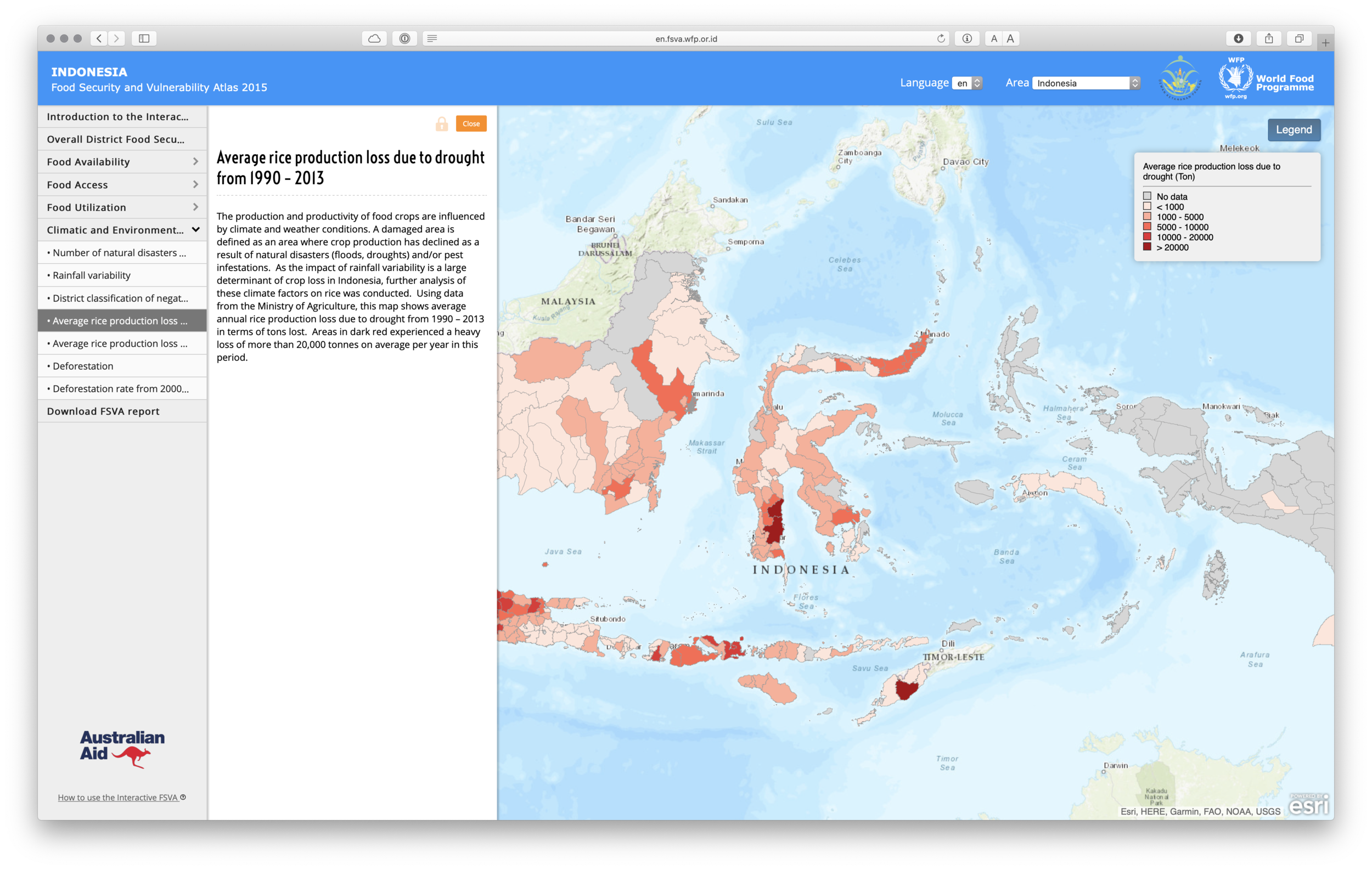Interactive FSVA.
2015 Food Security and Vulnerability Atlas
Since 2003, the Government of Indonesia, in collaboration with WFP, has enhanced its understanding of the state of food security in Indonesia– including at the local level – through the development of food security and vulnerability atlases (FSVAs). These atlases are valuable tools for enhancing the targeting of programmes and the design of policies that aim to improve food and nutrition security throughout the nation. The 2015 FSVA is the latest product of this joint collaboration.
The FSVA includes 13 indicators based on a review of data availability at the district level and their ability to measure various aspects of food and nutrition security. The FSVA divides these indicators into two sets: chronic food and nutrition insecurity and transitory food insecurity. Within chronic, indicators measure food availability, food access, and food utilization. The transitory indicators describe climatic and environmental factors that affect food insecurity from an availability and access perspective. The nine indicators that relate to chronic food insecurity are combined into a single composite indicator to describe the overall district food security classification.
The food and nutrition security conceptual framework shown here forms the basis for the analysis in the FSVA. The framework is based on three pillars of food security – availability, access and utilization – and integrates important nutrition and vulnerability considerations. A fourth dimension or pillar of food security refers to stability. This is reflected in the FSVA in terms of chronic versus transitory or acute food insecurity.
Reference: http://fsva.wfp.or.id/
Tools: ArcGIS Online, NodeJS, Nginx, Javascript, Highcharts
Year: 2015
Team: Amit Wadhwa, Benny Istanto, Dedi Junadi, Ridwan Mulyadi, Aminuddin Mohammad Ramdan, Jeffry Pupella, Fachrul Rizky, Eva Juniza, Tarningsih Handayani, Ha’i Ragalawa, Emily Turano



















